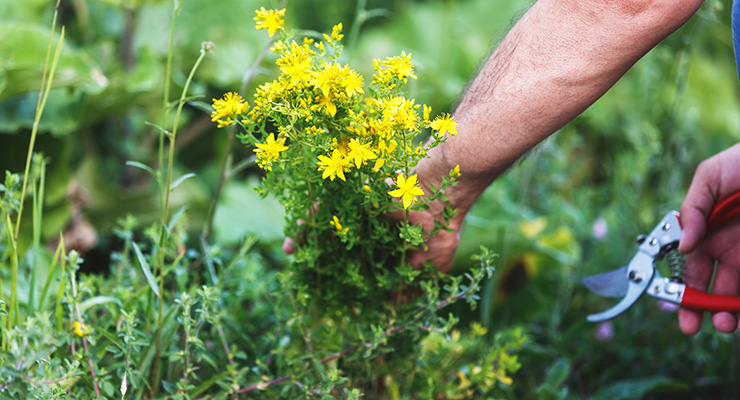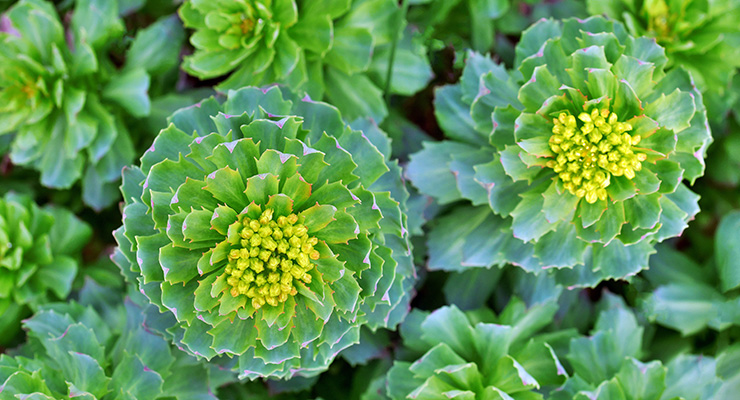Features
Botanicals in Commerce: Challenges Abound for Wildcrafting
High demand, labor shortages, quality, and other factors are affecting the trade of wild-harvested botanicals.

By: Mike Montemarano

Botanical experts discussed an increase in commercial cultivation of medicinal herbs, and the advantages compared to foraging for wild plants during the American Herbal Product Association’s (AHPA) Botanical Congress in May. At the same time, panelists noted efforts to preserve the intergenerational practice of gathering herbs and botanicals from the wilderness, and how best to serve these communities.
A New Global Estimate
Josef Brinckmann, research fellow, medicinal plants and botanical supply chain, at Traditional Medicinals, discussed recent research he and an international team conducted to update estimates about the trade volume and conservation status of medicinal and aromatic plant species.The new paper, published in Economic Botany, was supported by the German Federal Agency for Nature Conservation, and is similar to an ongoing study being commissioned by the U.S. Environmental Protection Agency, Brinckmann said.
Previous estimates published in the 2000s had assessed that 700 species were subject to commercial cultivation. According to Brinckmann and his team, today there are 3,227 species in commercial cultivation.
“We knew the estimates were far too low based on personal experience,” Brinckmann said. Beyond the numbers, the team sought to understand how domestication of different plant species impacted their conservation status, and whether certain forms of cultivation like intercropping and agroforestry yielded benefits for both a given plant and the surrounding environment.
“We wanted to know what was driving the push from wild collection to commercial cultivation,” Brinckmann said.
In total, the researchers amassed information from 13,371 distinct examples of commercial cultivation, and collected information from farms in 162 countries related to methods of agriculture where possible.
In terms of conservation, 954 of the 3,227 species were assessed by the International Union for Conservation of Nature Red List—2.5% of which were placed in the threatened category. When it came to national red lists, however, 21% of commercially-cultivated species were determined to be threatened.
Cultivation Candidates
It can be challenging to predict which botanicals might transition from wild harvesting to commercial cultivation. While the threatened status of a plant is sometimes the primary reason commercial cultivation is favored over wildcrafting, it is not the most common reason. The varied economic feasibility of commercial cultivation was a much more dominant factor, Brinckmann noted.Commercial cultivation simplifies the standardization of a specific profile of bioactive compounds, and prevents losses due to variability that exists in wild plants. Many botanical plants require years in order to develop harvestable roots, and botanical product companies consider the wait time for a return on investment too long.
Rhodiola, for instance, has a 5-year growing cycle, so very few commercial cultivators exist for this particular plant, noted Adriana Regidor, corporate strategy and sustainability director at Nektium.

Where Will Wild Harvesting Last?
The number of people and communities willing to engage in wild harvesting of botanicals appears to be in sharp decline, and achieving a reliable supply of wild herbs is more difficult than it was in years past, experts reported. Some herbs that can’t reach levels of demand needed for commercial cultivation may soon become unavailable.“While great efforts have been made, we haven’t hit commercially viable levels of demand to support cultivation of Appalachian wild herbs,” said Brennan Lincoln, general counsel at Herbal Ingenuity. “Until then, there will be difficulties going for American ginseng and goldenseal, so the challenges that come with sustainable wildcrafting will matter for some time.”
Lincoln noted that in many communities where wildcrafting has been part of local culture and livelihood for generations, “everyone that can leave is now gone. The aging population has the know-how but not the ability, and they can’t connect with younger people … It’s hard to get people to do work for which they don’t feel fairly compensated. People are following the money and can find less exploitative work.”
“This is also happening for imported wild-collected plants from eastern Europe, such as Poland, Romania, Bulgaria, and Hungary,” he added. “It’s hard to get people to collect herbs like linden flowers. In these areas, any other economic activity leads to fewer people willing to do this kind of work, and prices of materials are going up astronomically as a result. Buyers now need to make financial commitments in advance, such as pre-financing. The conversation is less about establishing a fair working price and more about what it takes to get people to do the initial work of harvesting instead of other types of work.”
Chuck Wanzer, president and founder of Botanics, Inc., an expert in ingredients like echinacea and saw palmetto, noted mounting challenges as well as increased demands on quality.
For instance, in the wild, accidental adulteration can occur due to picking a similar palm as saw palmetto. Meanwhile, many plants in the wild have a tendency to cross-pollinate with echinacea, resulting in unfavorable profiles of bioactives.
“Dealing with nature makes life a lot harder, and you hate to take such huge losses after the amount of effort involved in wild collection. For example, I’ve had truckloads of saw palmetto rejected because people who hand-picked the plants had insecticide on their hands,” Wanzer said.
Accessible Land is Shrinking
Swathes of undeveloped land in the U.S. and elsewhere, once relied upon for wild harvesting, are now privately owned, and many areas where wild harvesters were able to work are now inaccessible, noted Wanzer.“Generally, there’s no interest in development or high-impact activity [on privately-owned, undeveloped land], but there’s definitely interest in non-timber forest products on the east coast,” said John Munsell, project director of the Appalachian Beginning Forest Farmer Coalition, a network of forest farmer organizations in the region which is aiming to expand nationally as a support network for wildcrafting farmers.
He noted there are major unfulfilled needs for these communities, such as improvements in traceability, quality, adulteration, workforce development, distribution, and pricing, which serve as barriers to market growth.
“The common acreage for forest farmers is 10-20 acres, and this sort of agriculture is most often for supplementary income. Scale is an issue, and the herbs and botanicals industry needs to figure out how to aggregate distribution of small-scale quantities for bulk orders,” Munsell said.
“We’ve done research at Virginia Tech and found that landowners in this region are willing to get involved in a land-access arrangement to open their land to forest farming,” he added. “The hunting club model is a great example that could be followed, where forest farming groups pay a fee to get people on the ground. Beyond ensuring that their land has good biodiversity, people also like the idea of others keeping an eye on their properties … This has the potential to provide good supplemental income for those in an economically-depressed, forest-dependent region.”




















